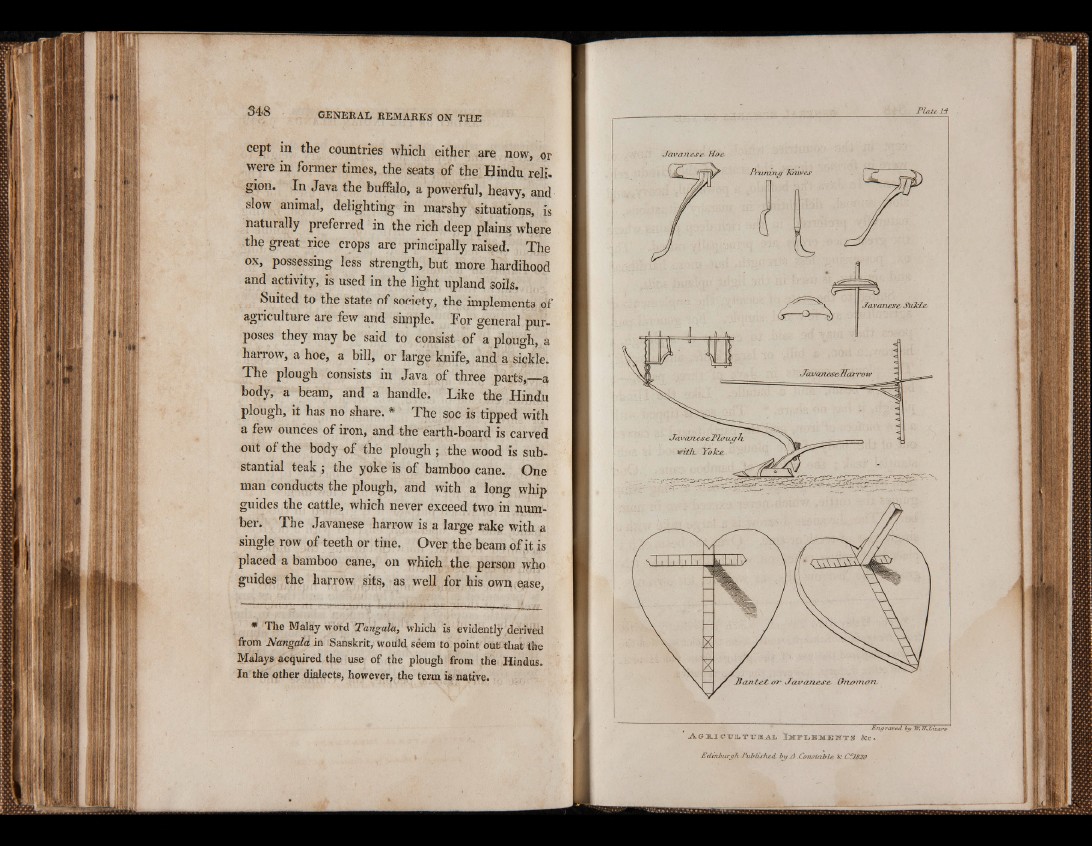
348 GENERAL REMARKS ON THE
cept in the countries which either are now, or
were in former times, the seats of the Hindu religion.
In Java the buffalo, a powerful, heavy, and
slow animal, delighting in marshy situations, is
naturally preferred in the rich deep plains where
the great rice crops are principally raised. The
ox, possessing less strength, but more hardihood
and activity, is used in the light upland soils.
Suited to the state of society, the implements of
agriculture are few and simple. For general purposes
they may be said to consist of a plough, a
harrow, a hoe, a bill, or large knife, and a sipkle.
The plough consists in Java of three parts,—a
body, a beam, and a handle. Like the Hindu
plough, it has no share. * The soc is tipped with
a few ounces of iron, and the earth-board is carved
out of the body of the plough ; the wood is substantial
teak ; the yoke is of bamboo cane. One
man conducts the plough, and with a long whip
guides the cattle, which never exceed two in number.
The Javanese harrow is a large rake with a
single row of teeth or tine. Over the beam of it is
placed a bamboo cane, on which the person who
guides the harrow sits, as well for his own ease,
* The Malay word Tangala, which is evidently derived
from Nangala in Sanskrit, would seem to point outi that the
Malays acquired the use of the plough from the Hindus.
In the other dialects, however, the term is native.
-A iG H L I CTEnL.TUI8.AJL XMTF3L.E2ÆJE TT'T S Bic •
P d in b itrg h P u b lish ed , b y A .C o n sta b le 8c C?1820
E n graved. ~by W, IT. Lizar-s-
Javanese,
Bantet, or Javanese, Gnomon,